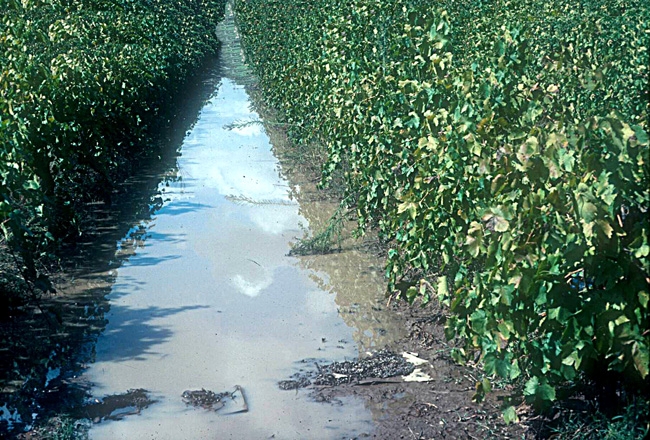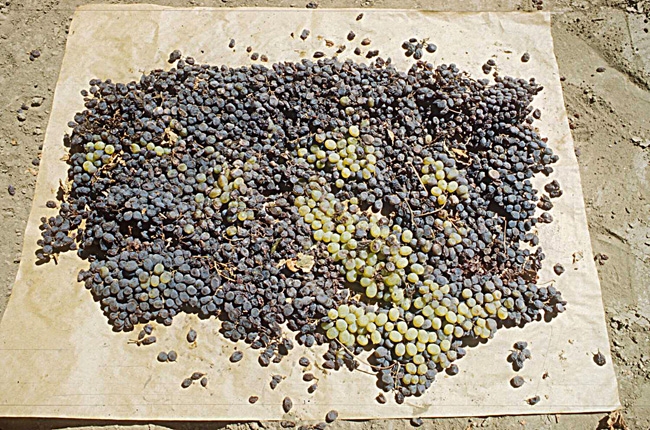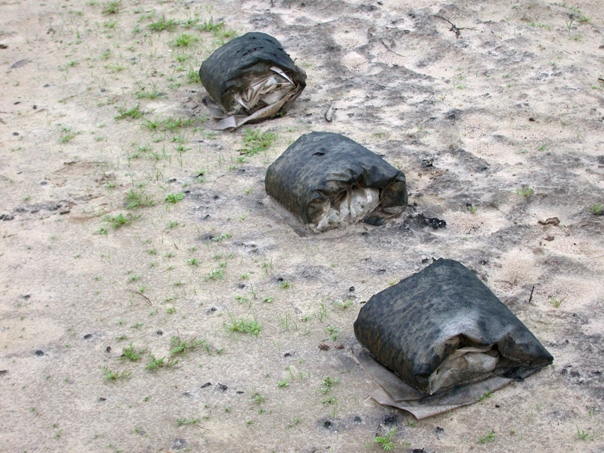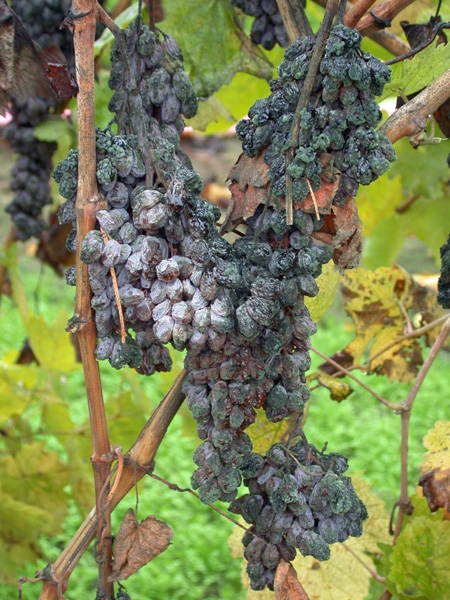Rain is predicted for this Tuesday and Wednesday, October 4-5, 2011. Should rain occur, follow these practices to minimize damage and infestation to raisins:
Tray-dried raisins
• Slip trays to prevent their sticking to the soil. Move them just enough, 1 to 2 inches, to break the seal between the paper and the soil. This interrupts the wicking of moisture from the soil into the tray.
• Turn the trays as soon as possible to expose bottom fruit.
• Do not save fruit stuck to the bottom of trays or mix it with other fruit. Use new trays as needed, or reverse old trays at turning by putting the soil side next to the raisins (but only if soil is not sticking to the underside of the tray) and leaving stuck fruit on the outside.
• Pick moldy or rotten fruit off the tray before rolling. This is the best opportunity to reduce moldy fruit by hand.
• Get rolled fruit out of the field as soon as possible. Do not fill bins with raisins above 18 percent moisture. Use half-filled bins at 18 to 20 percent moisture. Sweat boxes are suitable for raisins up to 20 percent moisture; half-fill them with raisins between 20 and 22 percent moisture. Begin on-farm or commercial drying as dictated by moisture. Immediate drying is needed when raisin moisture exceeds 22 percent.
DOV raisins
• Raisins that are dry enough to be harvested should be removed from the vineyard. DOV raisins that do get rained on will pick up moisture. However, depending on the weather after the rain event, they will dry down to their previous moisture but may need 1 to 2 additional weeks to meet delivery standards. Late season rain events will greatly reduce the chances of naturally drying the fruit. Growers should make arrangements with a packer or dehydrator to finish drying the fruit. NOTE: DOV fruit is sensitive to excessive handling and should be delivered to a packer as soon as possible.
Boxing and Delivery
• Watch for spoilage in boxed raisins. Dump fruit over and spread into more containers at first signs of spoilage.
• Run fruit across a shaker, if possible, to reduce insect infestation and to provide another chance to pick out mold. Do not run fruit with too many uncured berries over a shaker.
• Cover tightly with polyethylene during rainy, foggy, or humid weather. Otherwise, raisins will absorb moisture directly from the air. Use paper covering, such as tar-impregnated paper, underneath the plastic to prevent water condensation.
• Deliver the raisins as soon as possible to the packer so that they can be fumigated.
Commercial washing and drying (wet reconditioning) may be necessary to further remove mold and embedded sand. The service is offered by many packers and most commercial dehydrators. The need can be determined by a USDA inspection.
Attached Images:



